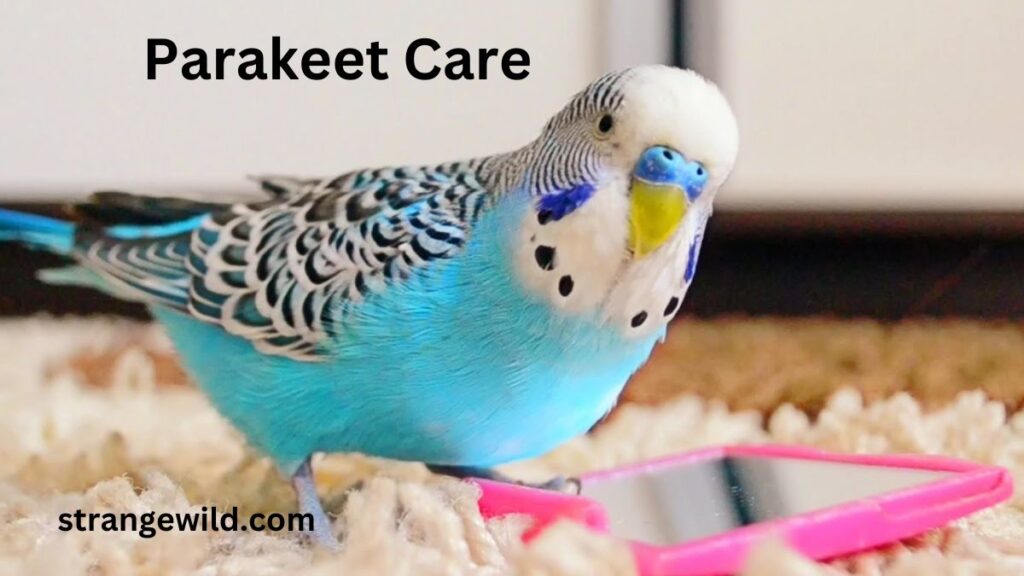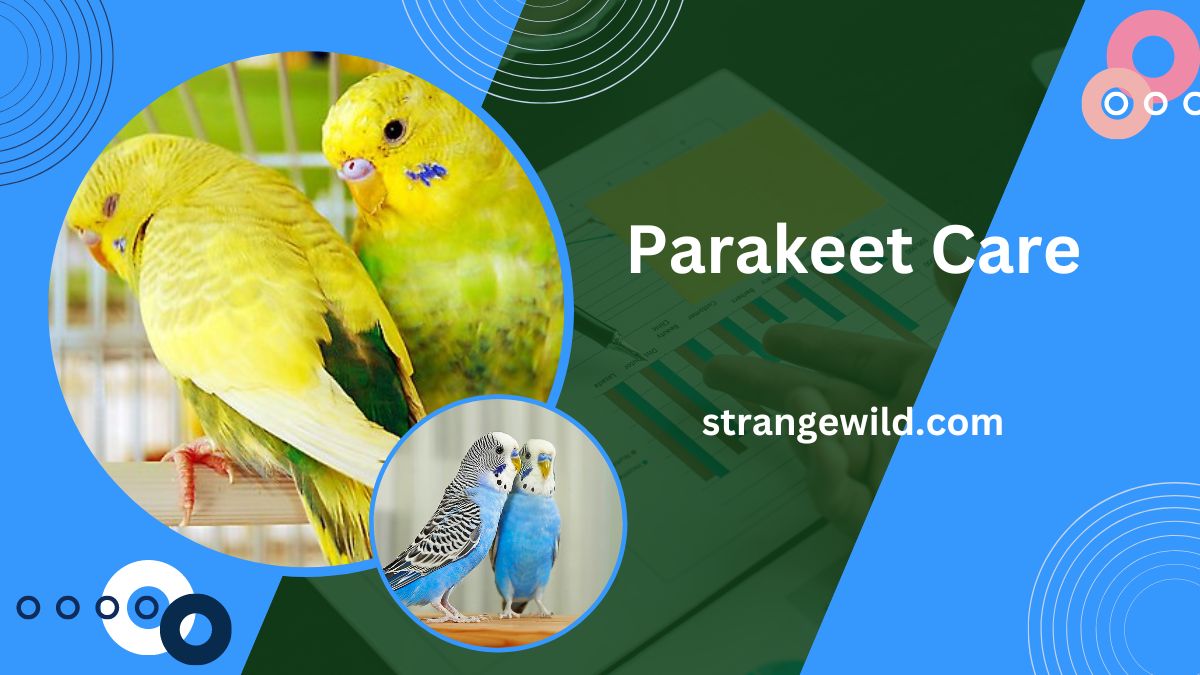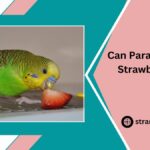Parakeet Care – A Complete Guideline
Parakeet Care? Parakeets, also referred to as budgerigars or “budgies” for short, are a common bird species that can be seen in residences all over the world. Parakeets may make fascinating pets for a very long time with the right care, which includes adequate feeding, socialization, environment, and routine veterinarian care. Carolina Parakeet

Where Can I Get a Parakeet?
Parakeets are readily accessible and reasonably priced because they are one of the most popular pet birds in the United States. A parakeet can cost as little as $20 to $25, but costs can reach as high as $60. The actual expense is purchasing the cage and its accessories. The ideal option is to buy a parakeet from a breeder because they will be used for human contact and are frequently nurtured by hand. Birds of Hawaii
Of course, they will cost more than birds you’d buy from a pet store, but parakeets you’d buy from a pet store are typically warier of people and may take longer to warm up to you. They don’t require human interaction because they are typically kept in a flock with other budgies.
What Is the Cost of Owning a Parakeet?
Although having a little bird like a parakeet is often inexpensive, the cost can add up over time because some parakeets can live up to 30 years. The initial cost of purchasing a bird, a cage, and accessories will be the biggest; however, subsequent costs are quite low.
The approximate breakdown of parakeet ownership costs is as follows:
- You should anticipate paying anywhere between $20 and $60 for your parakeet, depending on whether you get it from a breeder or a pet shop.
- Depending on the size and quality you select, a cage might cost anywhere from $50 to $150.
- Small parakeet toys are typically cheap, but they must be changed out rather frequently. New gadgets often cost $50 to $100 every year.
- Vet fees. A yearly checkup with the vet will cost between $50 and $80, assuming your parakeet does not become unwell.
- Meals and sweets. Depending on the quality of the food and the number of treats you want to offer them, feeding these small birds won’t cost you more than $30 to $50 a month per bird.
How Well Do Parakeets Make Pets?
Parakeets may be excellent companions and make fantastic pets. The majority of parakeets are gregarious creatures that develop close ties with their owners and love to be held and petted—gently, of course! This implies that they require daily engagement and care from their owners, particularly if they are single. They require a lot of daily stimulation because they are highly intelligent birds that are even capable of speaking.
Despite being little, these birds can vocalize very loudly, so don’t be fooled by their size. Although they might not squawk as loudly as larger parrots, smaller parrots can chirp virtually constantly, especially if they’re bored. Despite being relatively simple to care for, these birds are very delicate creatures that can become ill with even small temperature fluctuations.
Care Instructions for Parakeets: Parakeet Care
Parakeets are considered to be simple-to-care-for birds and are regularly spotted in pet stores. While this is partially true, it doesn’t negate the fact that each of them has unique needs in order to preserve their health and pleasure. The best strategy is to become familiar with parakeet care before bringing one home.
Diet
Parakeets need a diversified diet because they cannot subsist entirely on the seed. In place of seeds, proteins, seeds, grains, vegetables, and fruits are ground into pellets, which are then baked into regular forms. Pellets provide balanced nutrition with each meal, in contrast to seed combinations that let a parakeet pick and choose the seeds they prefer while discarding the rest. Keep around two teaspoons of pellets available and top out the dish as needed because birds eat all day long.
Pellets with natural coloring should always be preferred over those with artificial coloring. A brand like Roudybush offers pellets scaled for parakeets and a range of different species, so make sure to pick the proper size for your pet. Pellets should make up the majority of your parakeet’s diet, but other items should also be provided for a balanced diet.
The food you provide your parakeet should be a combination of pellets, fruits, veggies, and treats. Fruits should only be served twice or three times per week because of their high sugar content. Bananas, peaches, and fresh berries are examples of safe fruits. Every day should include feeding the vegetables. Vegetables including tomatoes, cucumbers, and zucchini are advised.

Include Minerals
For the health of their bones and feathers, parakeets need minerals, and female parakeets that lay eggs need calcium replacement. You can also place a mineral block and a cuttlebone on the side of the cage for your parakeet to chew on even if pellet mixes already contain minerals. Because they eat seeds without the hulls, parakeets don’t need grit in their diet.
Habitat: Parakeet Care
Your pet will be comfortable in the proper cage if it is put in a draft-free location out of the sun. The benefit of a spacious cage for parakeets. A cage that is at least 16 inches long, 18 inches wide, and 18 inches tall should be provided for your pet. Give them a cage that is 30 inches long, 19 inches wide, and 18 inches tall for even better flying space.
If you have the space, you could even provide them with a bigger flight cage as long as the distance between the bars isn’t too great. The cage should be twice as big if you have two parakeets. Buying a larger cage is advised if they won’t be taken out of it frequently so they have room to fly. When buying a larger cage, check the bar spacing to make sure it isn’t too wide.
Cages for parakeets should have no more than a half-inch between the bars. Your pet might be able to fit its head through a hole that is bigger than this and get wounded or stuck. To avoid your parakeet from stepping on excrement, parakeet cage floors should be excellent. Additionally, by doing this, the cage liner is protected, making cleanup simpler.
Accessory Cages: Parakeet Care
Although food and water bowls are normally included with cages, there are certain extras you might want to add to enhance your pet’s quality of life. For instance, perches will give your pet a place to sit and take in their surroundings. Although parakeets require perches that are between half and one inch in diameter, their feet benefit from having perches of somewhat different sizes. Consider using cement perches to assist your bird’s nail tips wearing down as well as manzanita perches for prolonged use. If your pet’s cage doesn’t already have a swing, you should install one.
Swings can be fairly simple, however many of them have toys or other chewable attached. Additionally strongly advised are toys to keep your pet content. Intelligent parakeets experience stress from boredom. By adding bird-safe toys to your parakeet’s cage, you may improve the atmosphere for them. They significantly enhance your pet’s mental and physical wellness and can be purchased at practically any pet store. It’s also advised to keep a good stock of toys on hand so that they can be exchanged for brand-new adventures.
Toys like the ones listed below are available at your neighborhood pet store:
- Destroying toys: Toys made of wood or yucca that can be torn apart are favorites of parakeets.
- Scavenging toys: These are toys that you can stuff with tasty treats that your parakeet will have to hunt for and pull out.
- Ringing toys: These are also quite popular, but make sure to only choose toys with bells that are suitable for birds. These bells are tubular, and the clacker is carefully hidden inside so that it won’t cause choking.
Cleaning
Your pet’s health will be preserved if its cage is kept tidy, and the following routine will help you stay on track. Every day, wash the food and water containers and replace the water when you see that it has become contaminated. Every two to three days, or more frequently if necessary, replace the dirty cage lining. The cage tray should be cleaned once a week with a solution of water and vinegar, dried with paper towels, and then the cage should be put back together. Clean the perches and cage bars as well.
Exercise: Parakeet Care
The issue of releasing parakeets from their cage, which has the potential to cause harm, is still up for debate. In our experience, your parakeet will be happier and healthier overall the more time they can spend outside of their cage. Even if there may be risks, it’s much preferable for them to become accustomed to a safe area in the home as opposed to being confined to a cage all day, every day. Being energetic creatures, parakeets value their free time greatly.
Although they have entertainment in the form of toys inside their cage, being free to roam other public areas is a surefire method to keep them content. Naturally, you’ll need to make sure that your house is as secure as possible, with no exposed windows, doors, or anywhere where they can get caught.
Socialization
Happy and sociable birds, parakeets love spending time with their owners. These birds frequently reside in large flocks in the wild because they think it is safer to be with other people. Spend as much time as you can interact with your parakeet outside of its cage if it doesn’t have a partner. They won’t need as much of your time if you have a pair because they have each other to hang out with. Due to the fact that they will typically be happier when kept in pairs, the majority of specialists advise doing so.
Handling
Before handling your parakeet, give them some time to get used to their new home. Cover half of their cage with a cage cover, towel, or blanket when they first get home. This will give them some privacy while they adjust to their new home while yet allowing them to peek around if they so choose. Allow your new pet to unwind and relax for 48 hours.
During their time to decompress, you should stay away from their cage, as well as other people. However, you should not fully isolate them because you want them to become accustomed to household activities. A popular choice is a common gathering spot like a living room.
If your Parakeet has experience handling
After 48 hours, you can start interacting with them. Others may need to be socialized slowly and at their own pace because they may not have been socialized in their previous environment. Gently insert your hand in the cage beneath your bird if they are already at ease moving onto it. If the parakeets have been taught to do so, placing your fingers near their feet should cause them to move onto them. You can also instruct them to “step up,” a command that their former owner may have used when training them.
If your Parakeet is not accustomed to handling
It could take some time for your parakeet to get used to not only being handled but also coming out of its cage if it has only ever been touched occasionally or never at all. Don’t start handling them immediately away if they seem agitated when you approach. Instead, move cautiously in the direction of their cage until you notice them becoming apprehensive. Stop and don’t move forward once you discover that they are upset. Continue doing this until they allow you to approach their cage close enough to touch it.
You can start giving them treats like strands of millet after they are at ease with you touching their cage. Although millet is somewhat lengthy and puts some distance between you and your new pet, reducing stress, fruit or other rewards can also be used. Put the millet on the cage with a clip if they don’t want to eat it. Do not give up if it takes some time. When it comes to handling, some parakeets get used to it quickly, while others can need several weeks of constant instruction.
Health: Parakeet Care
Parakeets are generally healthy birds, however, they can be prone to the following diseases and conditions:
- calcium deficiency: A potentially lethal syndrome frequently brought on by excessive egg production.
- Giardia: The main reason why parakeet feathers are frequently plucked.
- A bird’s stomach yeast: A very contagious illness that causes mucus and blood to be vomited.
Quarantine: Parakeet Care
Unless your veterinarian advises it’s okay to incorporate your new pet into your flock. You should isolate your new parakeet for at least 30 days if you have other birds. Viral and dangerous bacterial spread is stopped by quarantining. Always wash your hands before tending to the rest of your flock after caring for a parakeet in quarantine.
Where to Find a Vet
Immediately after bringing your parakeet home, make a vet appointment for a checkup. If possible, try to utilize an avian vet who is board-certified in their field. The veterinarian will evaluate your pet’s current state of health and probably run gram stains to look for illnesses. Psittacosis is a disease that may infect humans from birds. So it’s very crucial to have your pet evaluated for it. Your pet has to undergo a well-visit checkup every fall and spring after the initial examination.
Grooming: Parakeet Care
Maintaining your pet’s emotional and physical wellness requires routine grooming. While you might be able to complete some of these tasks on your own. Any form of trimming should be handled by your veterinarian. Use warm water to mist your bird several times a week to help keep its skin and feathers healthy. About once a month, or more frequently if they seem overgrown, trim their nails.
If your pet’s beak gets too long, ask your vet to cut it. Wing trimming is an optional and debatable practice. It can, nevertheless, help in some situations to stop injury or escape. Ask your veterinarian about it to get their opinion on the subject.
Lifespan: Parakeet Care
Pet parakeets have a lifespan of five to fifteen years. Life expectancy is influenced by a wide range of variables, including general health, genetics, and probable medical disorders.
What Food Should I Give My Parakeet?
The diverse diet that parakeets eat in the wild. Which includes seeds, fruits, berries, and foliage, providing them with a well-balanced diet that is rich in nutrition. There are numerous seed and pellet mixtures for parakeets. And it is strongly advised to buy the best food you can manage. Although they provide a wonderful supplement to your parakeet’s diet, seeds alone cannot sustain a healthy existence.
Your parakeet should never be fed only seeds. Because they lack the necessary nutritional value and are high in fat and carbs. The most highly suggested food source for parakeets is a pelleted diet. Which will provide your bird with the proper nourishment. Pellets should make up 70%–80% of your bird’s diet and be of the highest quality feasible.
While they might be a wonderful extra treat for your bird, fruits, and vegetables shouldn’t make up more than 20% of its daily diet. Always have access to fresh, clean water, and clean all of your parakeet’s food bowls completely after each meal.
What Signs of Illness Does My Parakeet Have?
In addition to yearly examinations, it’s critical to closely monitor your parakeet for any indications of sickness. Since you are the one who knows your bird best, you should be able to recognize illness early on. Look for signs such as lethargy, a decrease in self-presentation, unusual feces, and wheezing or hard breathing. The best course of action is to visit an avian vet if you observe any of these symptoms.
Are Parakeets the Right Pet for You?
Although parakeets are little birds, they require the same level of care as any other pet. Parakeet maintenance demands commitment and focus. Before you bring your pet home, be sure you are prepared to meet all of their needs. As with any pet, keep in mind that this is a significant commitment. And you are ultimately responsible for their overall health on a physical, mental, and emotional level
Conclusion on Parakeet Care
Even though caring for parakeets is very simple, it is still a major responsibility. So you should be sure you can provide for them for at least 20 years before making the commitment. However, they make amazing companions who can converse, are easily tamed, and form close bonds with their owners. If you are willing to take on the duty. A parakeet is an excellent choice for beginners because it doesn’t require the same care as larger species. If you’re thinking about obtaining your first bird but are still new to the idea. A parakeet will be an excellent addition to your home if you’re seeking a happy, devoted, and low-maintenance pet.





